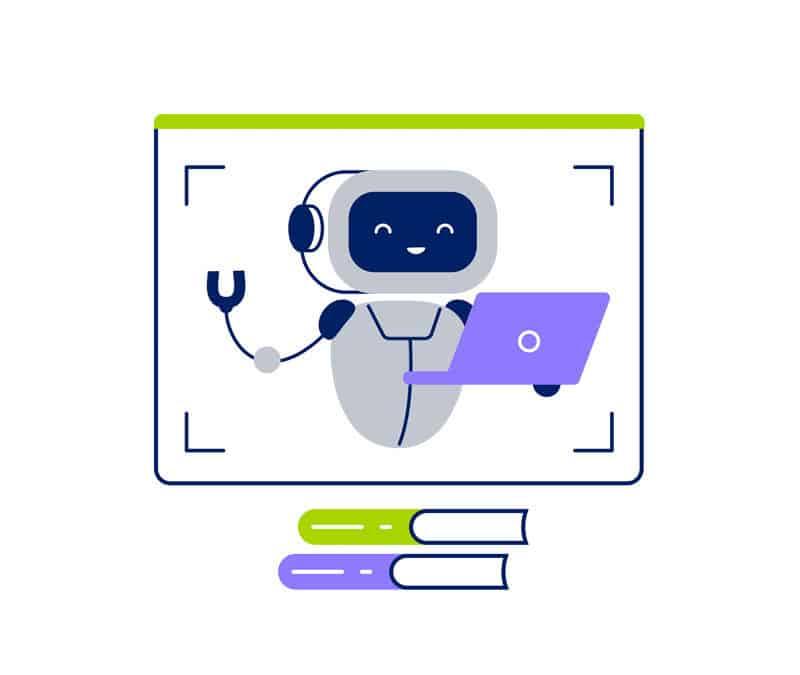
The global pandemic has fueled a surge in health-related app development, with an average of 250 healthcare apps released each day, ranging from sleep and fitness trackers to digital patient portals. At the onset of the pandemic in 2020, the global market for these apps was valued at $40.05 billion; it’s now expected to more than double in size to $100 billion by 2023. As providers and patients continue to adapt to the “new normal”, we expect to see strong demand for custom healthcare apps in 2022, driven by three major trends: wider adoption of telehealth and virtual care, staffing and retention challenges, and demand for greater efficiencies through process automation and stakeholder collaboration.
Wider Adoption of Telehealth and Virtual Care Apps
Not surprisingly, the use of connected health technology platforms skyrocketed in 2020 as providers were forced to shift as much patient care as possible from in-person to virtual interactions. According to McKinsey & Company, 2021 statistics showed an average of 15% of U.S. patient interactions – across all specialties – utilized telehealth tools. Though initial adoption was forced on many providers in response to the pandemic, a favorable regulatory environment and strong patient demand for virtual options strongly indicate that telehealth platforms are here to stay. 74% of US consumers surveyed by McKinsey said they would use a telehealth service and 76% said that access to medical treatment was more important to them than human interaction.
Patients aren’t the only ones warming to the virtual care model: as of April 2021, 84 percent of physicians were offering virtual visits and 57 percent said they would prefer to continue offering virtual care. An increasing number of practices are even moving to a “digital-first” approach, viewing telehealth as a viable strategy for ongoing, relationship-based care versus a tool to be used for transactional interactions or urgent care needs only.
When developing a telehealth platform, organizations should look to simplify the patient experience by integrating virtual care into patient portal features – everything from appointment scheduling and reminders to provider communications to prescription requests, billing, and follow-up surveys. Offering a variety of communications channels such as video, text, and chatbots through a single platform can also help streamline patient access.
SEE IT IN ACTION: RxLive is a personalized telehealth service that connects patients and expert clinical pharmacists in a secure, private and convenient way. The platform allows patients to learn ways to make their medication regimen more efficient and effective, save money, and avoid side effects and potential medication interactions.
Meeting the Challenges of Staffing and Retention with Employee-facing Apps
Nearly every industry continues to experience workforce challenges, but none more so than healthcare: a recent Medical Economics survey of physicians found staffing to be the number one challenge for medical practices going into 2022. Pandemic-driven burnout is leading to high turnover, and shifting patient volume is making staffing alignment even more complex. Increasingly, health system leaders are turning to technology to help address these workforce and productivity challenges, including recruitment, retention and employee engagement. Huron Consulting’s Embracing Healthcare’s Digital Transformation from December 2021 reports 50% of providers surveyed said they plan to invest in employee-facing apps in the next 12 months.
Platforms that streamline employee scheduling, time tracking, task management, and reporting can help alleviate administrative burdens for both medical and office staff, improving productivity and reducing burnout. Similarly, incorporating virtual care technologies into nursing workflows allows for greater scheduling flexibility and remote work options. Practices that invest in these technologies are likely to see significant improvements in retention and engagement, as a recent McKinsey survey showed nurses “enthusiastic” responses to such capabilities, and roughly two-thirds of frontline nurses said they were interested in providing virtual care in the future.
Customized employee-facing apps allow healthcare organizations to offer employees the combination of capabilities and features which address the organization’s specific needs in a single platform. Compared to asking employees to use one app for scheduling and time-tracking, another for real-time communication, and so on, custom platforms further streamline processes and reduce headaches for already stressed staff. From a management perspective, custom-designed apps allow them to meet the most pressing issues of today’s healthcare environment while remaining adaptable and scalable to meet future needs.
SEE IT IN ACTION: Freelance Clinician is a web-based system that connects freelance medical staff with recruiters to hire at a contractual rate.
Driving Efficiency with Process Automation and Stakeholder Collaboration Apps
As healthcare organizations emerge from a second year of financial damage caused by the pandemic, expect a pronounced emphasis on cost reduction through better process efficiencies as management seeks to improve margins where possible amid the ongoing crisis. For physician practices, pandemic-driven reductions in patient revenue and higher operating costs have squeezed margins significantly. According to Kaufman Hall, U.S. hospitals lost an estimated $54 billion in net income in 2021, even with federal Coronavirus Aid, Relief, and Economic Security (CARES) Act funding.
With these financial challenges ongoing in 2022, healthcare organizations are looking for technological solutions to make processes more efficient and less costly. A whopping 79% of health systems plan to automate scheduling and check-in with self-serve kiosks or apps, dramatically reducing the staff time consumed by these routine tasks. Other patient communications workflows are being targeted as well: 51% of healthcare IT executives stated they planned to invest in systems for scheduling, reminders, recalls, referrals, and other patient engagement activities. Expect to see more practices using technologies such as in-app chatbots to serve patients seeking answers to commonly asked questions without direct engagement by employees.
Beyond patient interactions, health systems are also looking to streamline clinical communications by deploying technology to facilitate real-time access to patient information and seamless collaboration among care teams. HIPAA-compliant portals will allow multiple providers to access real-time patient data, improving quality of care and reducing the administrative burden and error risk of manual data sharing.
As your organization continues your digital transformation in 2022, expect the trends outlined above to shape that journey in significant ways, and look for a partner with the right insight and experience to help you meet your goals.
Sourcetoad has been building software applications for nearly 15 years and understand how to transform various stakeholder demands and HIPAA requirements into effective technological solutions. Whether you’re looking to automate processes to gain efficiency or provide an online or remote version of your services, our team has years of experience developing, implementing, and maintaining successful projects like yours.
When it’s time to develop the right custom healthcare app for your organization, reach out to schedule a 30- or 60-minute call. We’d love to introduce ourselves, learn about your needs, and hear how we can help turn your idea into reality.


